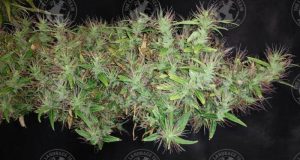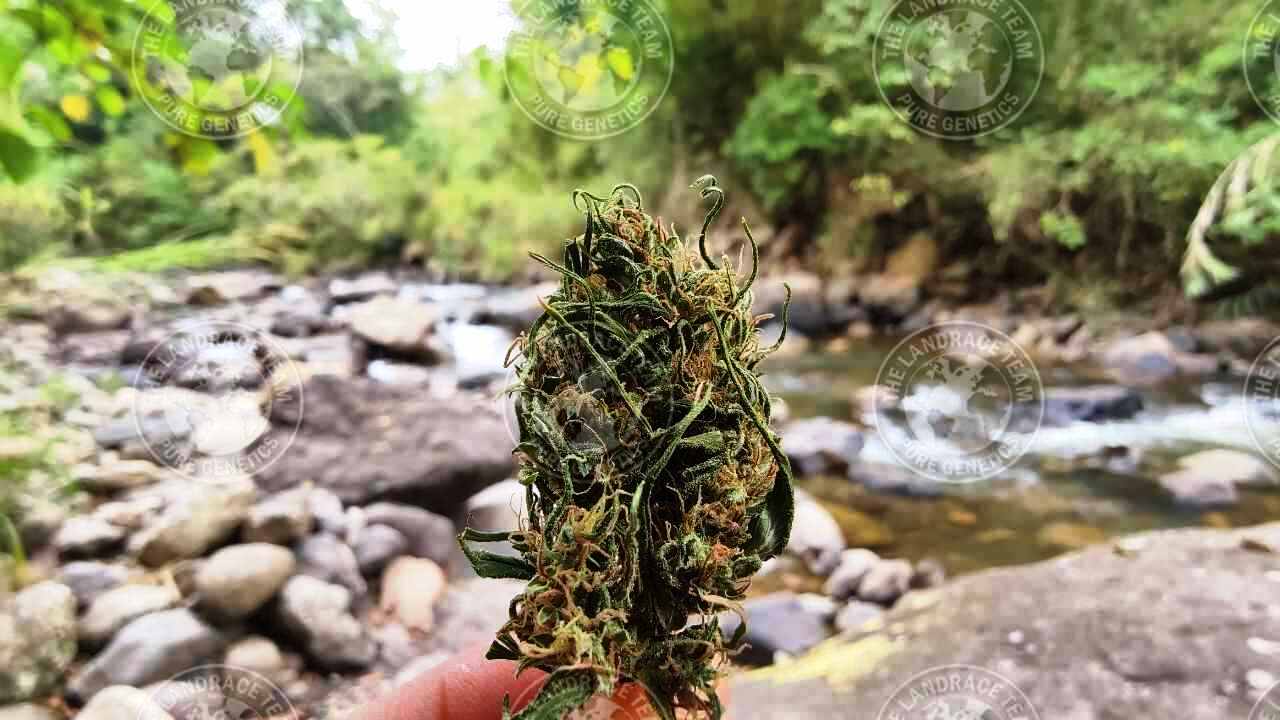Growing Sativas in northern latitudes, above 30 degrees north latitude.
The 11 Hour Method
This will help people that live in the north to grow and enjoy good equatorial sativas even if you live where it normally can’t be grown otherwise. It’s very important to start this method in early April so you can take advantage of the summer solstice on June 21st.
There is some equipment and supplies you’ll need before starting. 10-15 gals. containers (45 – 70 Litres)
- Spagnum Moss soil: Sphagnum peat moss, sourced from decomposed organic materials in the northern hemisphere, serves as a valuable soil amendment prized for its water retention and soil enrichment qualities. It aids in improving soil structure, fostering better aeration, and contributing to overall soil health.
- Seabird Guano and/or bat guano
- Crab Meal – It’s a 100% natural soil amendment made from the shells of crabs that will also act as a slow release fertilizer and nematode suppressant
- Kelp Meal – made from kelp. It is rich in nutrients, including nitrogen, potassium, and phosphorus. These nutrients are essential for plant growth. Kelp meal also contains trace minerals, such as iron and manganese, which are important for the health of your soil. Kelp meal has been used as a fertilizer for centuries.
- Powered Oyster Shell – an all-natural and high-quality source of the essential nutrient calcium. Oyster shell powder is the perfect supplement to add calcium to your plants, or your chickens’ diets (for super strong eggshells that can be used also in the mix). When you use it for your plants it will prevent calcium deficiencies.
- Organic Molasses – When molasses is added to organic fertilizers, it provides food for the healthy microbes in the soil. The greater amount of microbial activity in the soil, the healthier plants will be.
If you’re an organic grower a good soil is very important because healthy roots make healthy plants. Start with a good base soil, something that doesn’t contain wood chips or bark. Wood chips are a bad thing in your soil, you can see a good example by going to the window and look out at any tree and count how many plants are growing on the side of the tree. You’ll probably see zero! Plants will not grow on trees because they excrete a chemical that inhibits seed germination and root growth. So you almost never see plants growing on trees. There are vines that are preditory and will kill trees, they don’t count, they have overcome the defences of the trees. So use a spagnum moss based soil and you will have better results.
You will also need a good compost and then supercharge it with bat guano, seabird guano, crab meal, kelp meal and powered oyster shell. You should add some micos to the soil mix to help it break down the organic matter. Also add organic molasses to your fertilizer mix, one teaspoon is all you need. This will add magnesium, calcium, iron and potassium to your solution and give your plants these essential elements that they need to grow big and strong. Mix these together using the directions on each label and add to soil, 4 parts soil to 1 part compost mix. Use this soil mix and fill 10 – 12 gals. (45 – 55 litres) containers, as many as you are going to use. Larger containers are really not necessary because the roots will have plenty of room to grow with 10 gals (45 litres) they get heavy and hard to move, this is important if you’re an older grower with a bad back.
Ok, now that the containers are filled let them sit for a couple of weeks to let the soil digest the organic matter and make the nutrients the plant likes and needs. Using 1-2 gal (5-10 litres) grow bags start the seeds you want to use, let’s say a Colombian Punto Rojo. Fill your bags with the soil you just made and place them in a grow tent or grow-room. Add a small amount of water to the middle of your bags before you put the seeds in the dirt. Plant the seed about a 1/2 inch (1 cm) or so, cover, and water again lightly. Turn the grow lights on and leave on 24 hours so the room stays at a constant temperature so the seeds will germinate as soon as possible. After the seeds pop give them your normal tender loving care so all your seedlings grow strong.

Once they’re all up and doing well, about 7-10 days turn your light back to 16 hours. Try to time this so that your plants are about 12-16 inches (30-40 cm) at the first of May or so, depending on the weather, put them outside in a semi-sunny area, after a few days to let the plants get used to the sunshine, if you don’t your plants can get sunburnt. This will look like white dead areas on the leaves, remove the damaged leaves. Here’s where the work begins. You’ll have to move your containers with the plants in them into a dark place in the evening, first at sunset until your plants reach about 30-36 inches (75-90 cm). Don’t let them get much bigger than that because they get hard to handle and move around. If you have a large porch use that, it will hold about ten plants. If you have space in your garage or a pole barn that you can make dark that will work very well.
After they reach the desired height you can start flowering them. Start moving your plants into your dark room at 7pm every night and then bring them out every morning at 8am. It’s very important that you don’t miss the times , the plant will not like it and could hermaphrodite and ruin your crop. After about ten days you will see buds starting, they will grow fast at this point. Monitor for pests and mould, infestations should be minimal because they are moved inside at night and stay dry and mostly insect free. Once the buds are larger plant maintenance is essential now. Move them inside anytime it rains, wet buds will mold, so keep them dry as possible.
Ok, now that you know how to do the method here is when you do it. Start flowering your plants May 14th through the 21st, giving them only 11 hours of light a day. The buds will get large fast, that’s because the sunshine they’re receiving is the strongest possible sunshine it can get. Even though the sunlight is 12 hours or less in autumn (fall) it’s not as strong and does little to help make the buds much bigger. So giving the plants the sunshine six weeks before the summer solstice and six weeks after the summer solstice will give your plants optimal sunlight and produce the best buds possible. If needed you can use a little red wagon to move your plants, that’s what an old guy with a bad back would do.
This is a simple method that can be used to grow sativas up north where the Huskies go. You can also use this method on indicas. Although you should not give the indicas a 11 hour day, the buds don’t go as large and are a little soft. You can give them a 12 hour day at the same time you do the sativas and give them the optimal sunshine and get fantastic results. This method is used to grow all sativas for people living in cold places because living in cold places make it impossible to grow pure sativa plants and get anything that can be used. We know and tried many times, not worth the effort.
But if you want to plant directly into the ground you should use a hybrid sativa with an indica in it.
Aunt of Farouk is an excellent mix with sativas, also Pakistan1975. Black Magic Woman or Jamaican Hash Plant as well as Pakrai75 and several others are all good choices for a northern grow. If you have any questions about this method direct them to us and we’ll gladly answer them, to the best of our knowledge.
Happy growing!
The Landrace Team
